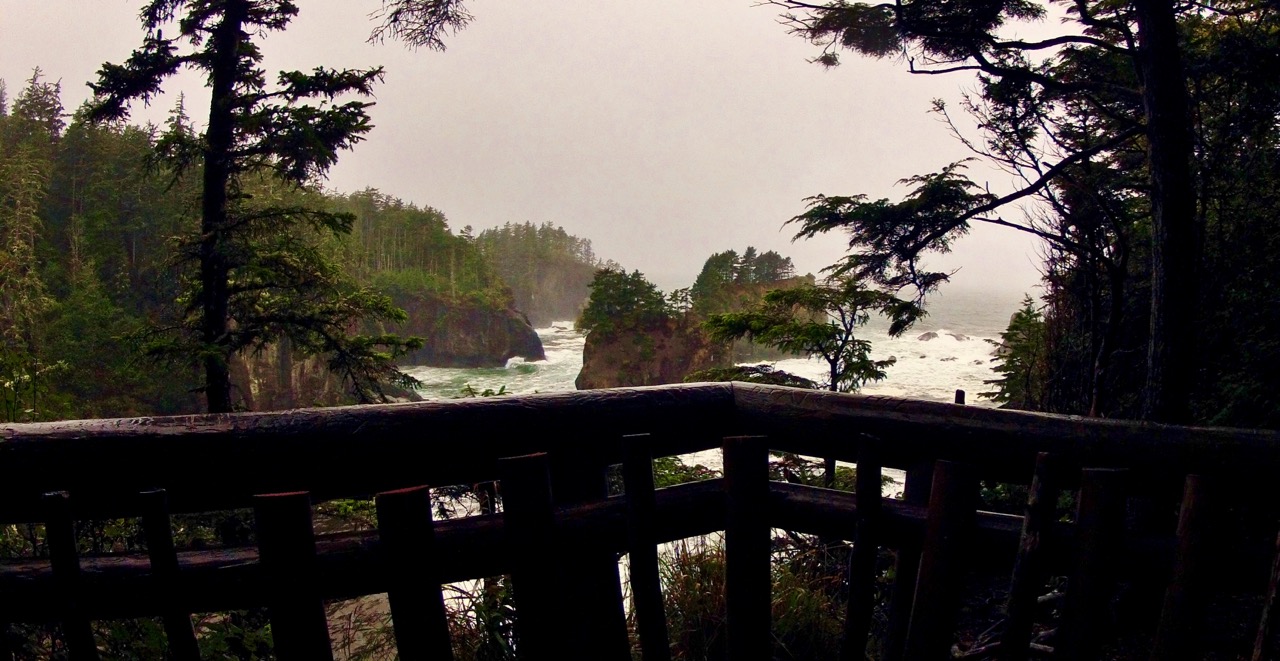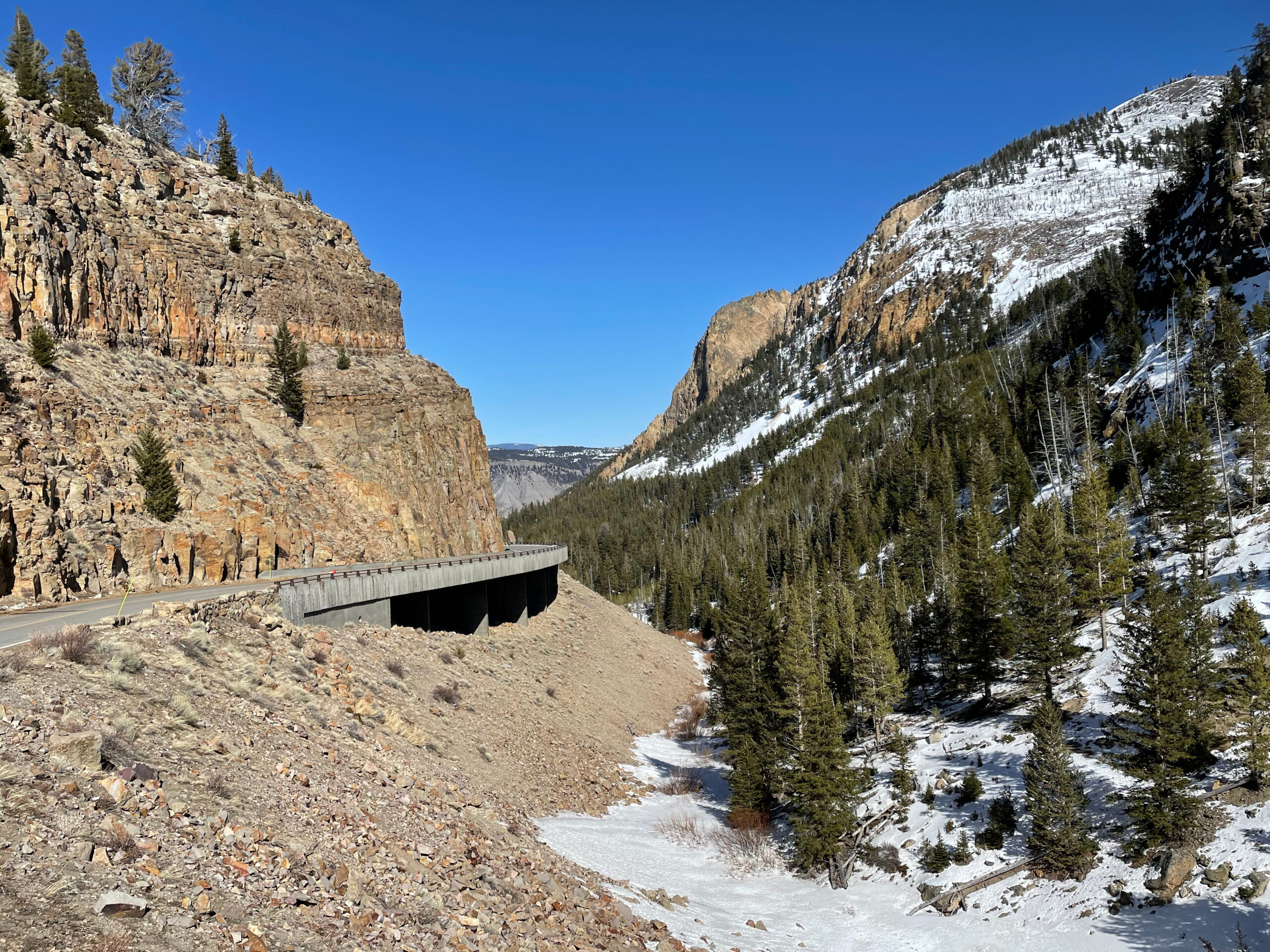Finally.
Raindrops are falling once again around Olympic National Park. The endlessly glorious summer ended long ago, and amazing warm, blue skies are a thing of the past. The days are growing short, like baby boomers, while the sun hides behind gray clouds, giving us a mere shadow of its potential. The rain is here for awhile, hopefully, and we should be rejoicing. Our life force, the blood of Cascadia, is water. The rain has arrived, and I want it to dump buckets and buckets on the region, giving us the shimmering green we all know and love. This is the Evergreen State. We live in the land of rainforests, wilderness coasts and snowy mountains dotted with glaciers. Without rain, we are nothing.
Today, it was rainy in Olympia, and while I was wishing to be out on the trails, I ran errands and worked. One task I completed was going to the bank to deposit a hard earned check. As I parked and walked to the door, a light rain started to fall and I looked up to enjoy the moment before walking inside. The rain was here, and that made me smile as I held open the door for a couple walking behind me. I assumed we were all in great moods, and sauntered along the forgettable carpet floor until we all stopped, waiting for the next teller. We stood there, on our phones, patiently waiting to make a financial transaction. I looked at old hiking pictures from blogs I have written to pass the time. As I flipped through waterfall pictures, resting my eyes on Murhut Falls, the couple ahead of me broke the strange social norm of being silent in a bank.
One Said: “I am so tired of this damn rain. Seriously. When is it going to stop.”
The Other Said: “I know, right?”
At the tip of my tongue, I was ready to launch into drought statistics, historical data and current river levels, but remembered that nobody cares. Instead, I started chatting with them, eventually showing them all the cool places you can go because of the rain. While we waited, I was pleased that the conversation shifted from the evils of precipitation to helping people find good hikes for the rainy weekends coming up over the next few months. We can either loathe the rain or love it, and after this summer, I plan to live every rainy moment to the fullest. With hundreds of trails to choose from, it can be hit and miss hiking in the rain. Luckily, I wrote the book on the place, and want to share a few of mine that are best seen during the rain. These seven day hikes are amazing, so pack your waterproof gear (and a change of clothes) and explore a rainy day in and around Olympic National Park.
7 Rainy Day Hikes In and Around Olympic National Park

Hoh to Mineral Creek Falls
Distance: 5.5 Miles RT
Located a flat 2.5 miles from the Hoh Visitor Center in Olympic National Park, Mineral Creek Falls is one of the lesser seen features for those explore the Hoh Region. Those visitors who decide to hike a few miles up the Hoh River Trail are rewarded with a perfectly pacific northwest waterfall. Mineral Creek Falls falls down a fern-ladder gully, the whites of the frothy water becoming illuminated against the dark greens of the saturated rainforest. In a region known for rain, Mineral Creek Falls is a perfect example of the beauty of living in a rain drenched region. Read More.

Cape Flattery
Distance: 1.6 Miles RT
Beautifully-designed and maintained by the Proud Makah Nation, the trail to Cape Flattery leads you to one of the most iconic images of the Olympic Peninsula Coast. This trail, which weaves through wonderful old-growth on raised cedar platforms, takes you to the Northwestern-most point in the contiguous United States. With sea stacks and a view of Tatoosh Island, which once was the whaling camp for the mighty Makah tribe, this is an amazing hike no matter what the weather. However, in the rain, as storm swells create huge waves, the view while standing on the bluffs gets no better. See for yourself with this video or Read More.

Pony Bridge
Distance: 5 Miles RT
While the Hoh rainforest gets all the glory, the Quinault Rainforest gets the beauty. To best explore the beauty on a quick day hike, Pony Bridge, located at the Graves Creek Trailhead, is a great destination. While this trail doesn’t offer the giant trees that you get a few more miles toward the Enchanted Valley, it does offer a view of a gorge that is so beautiful it will take your breath away. Pony Bridge is over the Quinault River, and while most bridge crossings in the Olympic National Park are decent, this one ranks among one of the most memorable. Twenty-five feet above a narrow gorge, greenish water is surrounded by moss-covered rock walls and towering trees. Read More. An added bonus to this hike is the Lake Quinault Loop Drive.

Sol Duc Falls
Distance: 2.2 Miles RT
Many know Sol Duc Falls from numerous magazines. Highlighted worldwide as one of the prettiest waterfalls in Olympic National Park, the location of Sol Duc Falls is pretty remote, but that doesn’t mean it isn’t worth it. Hikers of all levels and ages will love standing on the wooden bridge, looking down an amazing canyon in one direction and upstream toward one of the more memorable waterfalls of your life. The trail weaves through a magical feeling forest on the way to the falls, crossing over small creeks that cascade down the hillside over moss-covered rocks and logs. Contrasted off of the brown of the dirt and trees and the blue of the water, the entire scene is nearly impossible to describe or capture on a camera. Read More.

Staircase Loop Trail
Distance: 2.5 Mile Loop
Ninety short minutes from Olympia, Staircase offers stunning hiking year round, with terrain ranging from forests and rivers to high alpine ridges and rocky, snowy summits. The Staircase Loop Trail is the most hiked trail in the region, and for good reason. With huge cedars, amazing river views, giant boulders and a suspension bridge across the Skokomish River, it is an underated hike in the Pacific Northwest. While it is great year round, experiencing the trail in the rain is something everyone needs to do. As the rain falls in the mountains above, the river becomes faster, filling the river banks to their brims. Small trickles become powerful streams, meeting with the roaring giant of the Skok. Small rapids become swollen snakes, slithering down well forested river banks, and there are dozens of places to watch in awe. This hike in the fall is more than just a powerful river, as mushrooms, fall colors, and even occasional elk will be seen throughout fall. Read More.

Valley of the Silent Men aka Brothers Basecamp
Distance 12 Miles RT
Located past the ever-popular Lena Lake, the Valley of Silent Men sits quiet, no pun intended. Tucked away in The Brothers Wilderness, at the foot of the iconic Olympic Mountain known as The Brothers, the Valley is solitude in a land that appears to be more at home in Middle Earth than on the Olympic Peninsula. Giant boulders rest across moss-covered forests, as old growth timber creates a timeless canopy above. During the rain, small creeks become larger torrents of water, causing small waterfalls along waterways, as far as the eye can see. The Valley of Silent Men starts along the gorgeous Lena Lake Trail, and continues into true, raw, wilderness. Read More.

Goblins Gate to Dodger Point
To get to Dodger Point, the hike is longer than it used to be, thanks to washouts. To get here, hikers must first walk or bike along the Whiskey Bend Road, then walk along a well-groomed trail, past homestead cabins and through ridiculously magical forests. Passing incredible views of the Elwha River in places like Goblins Gate, this hike might be one of the best day hikes in Olympic National Park. While the forests of the Elwha aren’t as grand in scale as the Hoh and Quinault regions, they are just as, if not more photogenic. The best route for the trail has you starting at Whiskey Bend, then working your way toward Goblin’s Gate. From here, follow the trail and signs upriver to the historical Humes Cabin, where you can have a snack and read up on the importance of this cabin for early trips to the region. From here, work your way down the hill and across a pretty meadow while still heading upstream. After a slight elevation gain, you will be walking along the river until you reach the bridge. At this stunning cable bridge, stand in the middle and witness the sheer power and scale of the mighty Elwha River. With a the start of the Grand Canyon of the Elwha upstream, and a stupidly fantastic river basin view downstream, the Dodger Point Bridge is a hike that needs to be seen during and after heavy rains. Please Check Road Conditions for this hike. If this hike is too long, consider going to Sol Duc Falls.
DISCOVER MORE AMAZING OLYMPIC NATIONAL PARK DESTINATIONS
Find a Hike a Week through our Olympic National Park Area Guidebook




